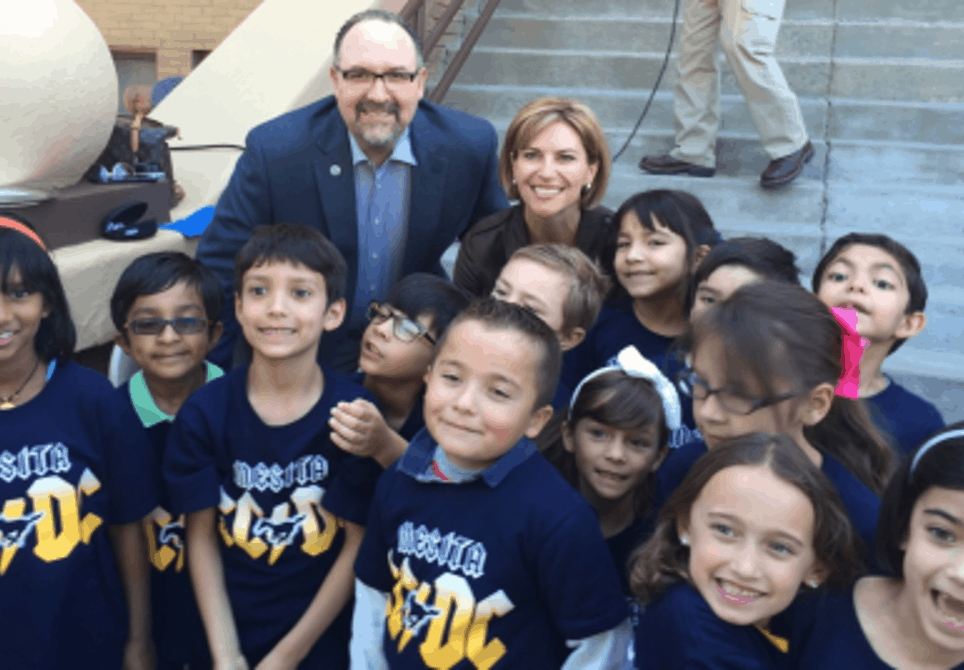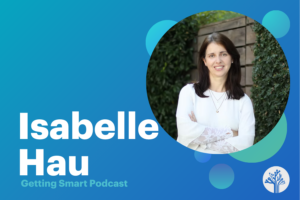All Children Should be Bilingual: The Dual Language Economic Imperative

After years of “test-prep” and failed attempts at educating English Language Learners (ELLs) with a transitional bilingual education model, the El Paso Independent School District (EPISD) shifted to an Active Learning framework–technology enhanced project-based learning that aims to engage and inspire every student every day.
Under the leadership of former bilingual teacher and current superintendent Juan Cabrera (@jecabrera12), EPISD transitioned its bilingual education program from a traditional exit-to-English program to dual language instructional models. The dual language model seeks to maintain academic and linguistic fluency in two or more languages.
In this podcast former global software executive Cabrera describes the benefits of his upbringing as bilingual and the ability it created for him to quickly become multilingual. Cabrera believes dual language programs are not just an equity issue, they’re an economic development issue.
“Dual language is definitely World Class Education,” said Dr. Elena Izquierdo, the UTEP prof who was the inspiration for the EPISD program. “It opens minds to new ways of thinking. With changing demographics, dual language provides bilingualism/biliteracy/multiculturalism and an advantageous role in the global economy,”
She added, “Genuine leadership inspires a profound understanding of diversity as children, teachers, parents and the wider education community learn, work, and play together. It embraces the value of knowing more than one language and expects nothing less than a rigorous curriculum delivered and learned through two languages.”
Fifth grade Mesita teacher Mayra Perez said, “I always try to emphasize to all my parents the benefits that their bilingual and bi-literate child will have…I think that for some reason the United States has always had a very closed-minded view on bilingualism. We always expect everyone to speak English, but we can’t be bothered to learn some else’s language.
“It is time to open our eyes and realize that our world is changing and if we want our children to be able to compete in this new global economy, they must be bilingual or multilingual. I hope this message gets spread widely so that people out there understand the importance. I would also like to give a big ‘shout out’ to Mr. Cabrera for his support of the Dual Language program and for his efforts to spread the word!”
Collier and Thomas tell us English learners enrolled in the dual language programs can fully close the gap in a second language in six years if the program is really well implemented, making 1.5 years of progress each year.
Houston ISD launched dual language program in 1994 and expanded in the last few years for a total of 69 dual language campuses.
As superintendent Cabrera stated, “multilingualism should be seen as an asset the way is seen internationally – and we need that mindset in the U.S. if we are going to stay globally competitive.”
Andrea Aguilar said, “Me siento muy feliz por ser parte de esta hermosa comunidad (I am very happy to be part of this beautiful community.)”
For more, see:
- Dual Language Education for Equity & Economic Development
- Transforming Teaching and Learning at an Early Age: EPISD Early Childhood Integration Model
- A New Direction for El Paso Schools
Stay in-the-know with all things EdTech and innovations in learning by signing up to receive the weekly Smart Update. This post includes mentions of a Getting Smart partner. For a full list of partners, affiliate organizations and all other disclosures please see our Partner page.









0 Comments
Leave a Comment
Your email address will not be published. All fields are required.